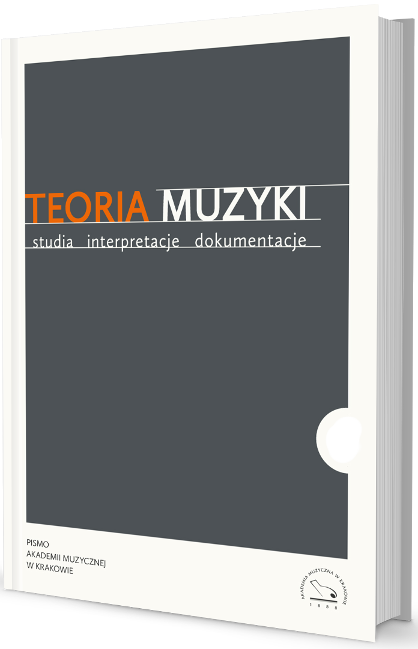„Kanon i postmodernizm” w twórczości
religijnej kompozytorów polskich
przełomu XX i XXI wieku
“Canon and Postmodernism” in Religious Works by Polish
Composers at the Turn of the 20th and 21st Century
Author(s): Krzysztof CyranSubject(s): Music
Published by: Akademia Muzyczna w Krakowie im. Krzysztofa Pendereckiego
Summary/Abstract: The starting point for this reflection on Polish sacral music at the turn of the millennia was the claim presented by Maria Piotrowska in Canon and postmodernism 59 about the maximal polarization within the interpretation of contemporary culture. On this basis one can clearly distinguish the ideological tension between sacral art (which as a rule invokes the theological aesthetic canon) and postmodern pluralistic discourses. This approach to the issue provoked an attempt a distinguish the boundaries and features of a new canon of artistic sacral music, broadened to include the postmodern experience. As examples, eight works have been chosen 60 ; those include large vocal and vocal-instrumental forms, all of the non-liturgical, concert repertoire, created between 1976–2011. A crucial factor in making the choice was the importance of including different generations of composers, as well as diverse creative approaches and stylistic idioms.Following the analysis and interpretations of the chosen works the author distinguished their common features which – according to him – make them noteworthy sacral compositions. The compilation of those features, divided in two groups, forms the proposition of the new canon of modern Polish religious music.The characteristics of the canon of the postmodern are: masterpiece value, an expression of the individual and objectified spirit, logos and logocentricity, and genre-specificity. Postmodern characteristics within the canon are: the avant-guarde and tradition in the quest for synthesis, dialogue with traditional values, and new ways of expressing the numinosum. The first are part of more universal categories; however, when confronted with a specific historical moment – the culture of postmodernism – they obtain specific meaning. The latter three are an attempt to describe the presence of “postmodernism in the canon,” the influence of postmodern thought, particularly its “discoveries” as regarding the problemification of new concepts.
Journal: Teoria Muzyki. Studia, Interpretacje, Dokumentacje
- Issue Year: VI/2015
- Issue No: 7
- Page Range: 31-52
- Page Count: 22
- Language: Polish

